There is a small upland church in the middle of nowhere near Devil’s Bridge. It is called Ysbyty Cynfryn. Its extreme antiquity is suggested by the huge standing stones which rear here and there within the structure of the circular churchyard wall. Its yews are also of considerable age. They are spreading English yews, not the upright fastigate Irish yews so popular since the early 19th century.
Possibly it is best known for the grave of four quadruplets born to Margaret Hughes in a cottage called Nant Syddion on 17 February 1856. Poor woman, it is hard to imagine her suffering. Three of her four babies died within three days of birth, the fourth, a boy, after a week. The brief lives of Margaret, Elizabeth, Catherine and Isaac are recorded on a single gravestone. In March there were further deaths: her son Hugh aged 5 died on 1 March, her husband Isaac, aged 32 on 6th March, and her daughter Hannah ( aged 3) on 10th March. These later deaths are believed to be as a result of infectious disease – un-referenced histories attribute them to various epidemic diseases: Typhoid, Typhus, Cholera, Smallpox and Influenza.
Multiple births seldom survived at this time. Nowadays treatments are available to improve the function of immature lungs and tubes can be inserted for artificial feeding. In the 19th century a baby who couldn’t suckle simply wouldn’t live, and it looks as if this was the fate of Margaret Hughes’ four babies.
But rarely, multiple births could be successful, and I found the memorial to one such in the tiny private chapel of Upton Castle on the upper reaches of Milford Haven in Pembrokeshire.
Upton Castle and its chapel date from the 13th century. The property was sold in 1774 by its ancestral family the Malefants, (who later, by inheritance, became the Bowens). It was purchased by Captain John Tasker a member of the nouveau riche whose huge fortune derived from service to the East India Company in Bombay. On Tasker’s death in 1800 his niece Maria Margaretta Woods inherited Upton Castle. She lived locally with her husband Revd Edward Woods (who was rector of Nash 1796-1801) and their two daughters. Revd Woods barely appreciated his luck, for he died aged just 43 in 1801 and in 1803 the wealthy young widow was married again, to another clergyman Revd William Evans then aged 41. It is hard to imagine her stress when on 11 October 1803 not one, but three young Evanses were born: William Paynter Evans, John Tasker Evans, and Richard Davies Jones Evans. The event is commemorated in a plaque in the chapel.
Maria lived to see her three sons grow to manhood, she died aged 47 in 1822, her triplets now aged 18.
In documents following the death of William Evans in 1838 we can find Revd William Paynter Evans, a clerk in holy orders, dwelling at Upton Castle along with his half sister Mary Sophia Woods a spinster ( and heiress through her mother). William Paynter Evans was married, but lacked surviving issue ( his infant daughter died at 7 months of age, and his wife Catherine Margaretta in 1844). * [Actually I learn they also did have a son, Charles Tasker Evans, who lived to adulthood, married, but had no children. See comments from Elizabeth Ann Roberts below]. However, when Revd William Paynter Evans died in 1853 his estate passed to his next brother. Both brothers had both become medical doctors and it was the second brother John Tasker Evans (1803-1895) who next inherited, and passed Upton to his son Vice Admiral Richard Evans, (1840-1927) who eventually sold the Upton estate. Clearly their precarious start in life did not hold the three brothers back, living as they did to the ages of 49, 92 and 59 respectively.
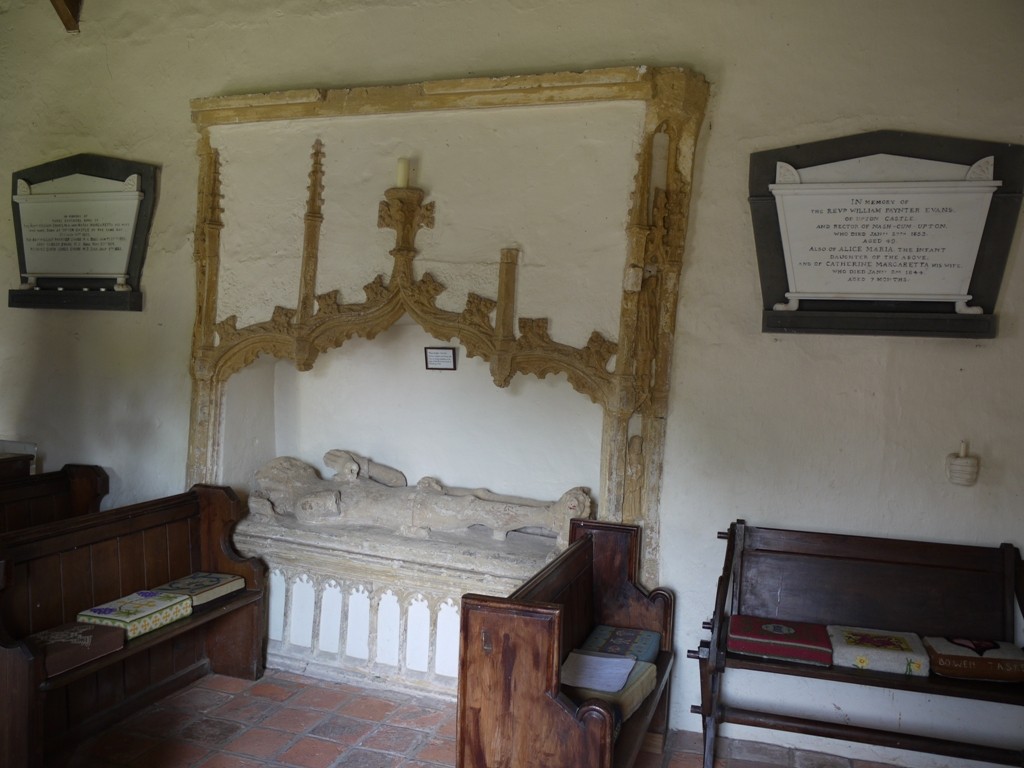
On either side of the medieval tomb of William Malifant are the memorial to the Evans triplets, and to the eldest, William Paynter Evans and his wife.
Unlike the four babies at Ysbyty Cynfryn these triplets were born to a wealthy family with land. It is likely that the Evanses would have been able to co-opt a healthy estate servant with a baby of her own to assist with the feeding, and this may well have been the key to their survival. Indeed the use of wet nurses by Welsh gentry families was widespread. At another Ceredigion mansion, Gogerddan, the reminiscences of Florrie Hamer, (1903-1994) recorded how a recently-delivered mother from the cottages would be checked out by the doctor and then sent up to the big house to feed a new baby. Sometimes the mother would have to abandon her own child to family and cow’s milk in order to accompany the Pryses of Gogerddan to London, to nourish their baby instead.
Florrie wrote in one of her scrapbooks of the birth of Florence Mary Pryse, sixth child or Sir Pryse Pryse of Gogerddan in 1869:
“My grandmother Elizabeth Hamer went into the nursery at Gogerddan to breast feed the baby and my father was handed to his grandparents to be brought up on cows milk.
It was the custom in those days for healthy young mothers among the tenants to do this, after a medical examination by old Dr Gilbertson, provided the tenant’s baby and the Pryse baby were born within a few weeks of each other. Children were brought up in this way for the first 18 months to two years of their lives. During this time when the family went to London my grandmother went too. This happen three times during the 18 months my grandmother was in the nursery, and when she took the baby out in the Park, Old John Sudds, valet, followed a few yards behind carrying his usual stout stick.”
Florence Mary Pryse grew up to be Mrs Loxdale of Castle Hill, Llanilar: the relationship was never forgotten, and when Liza Hamer died in 1925 Florence Mary Loxdale sent a wreath and card addressed “to my Dear Foster Mother”.

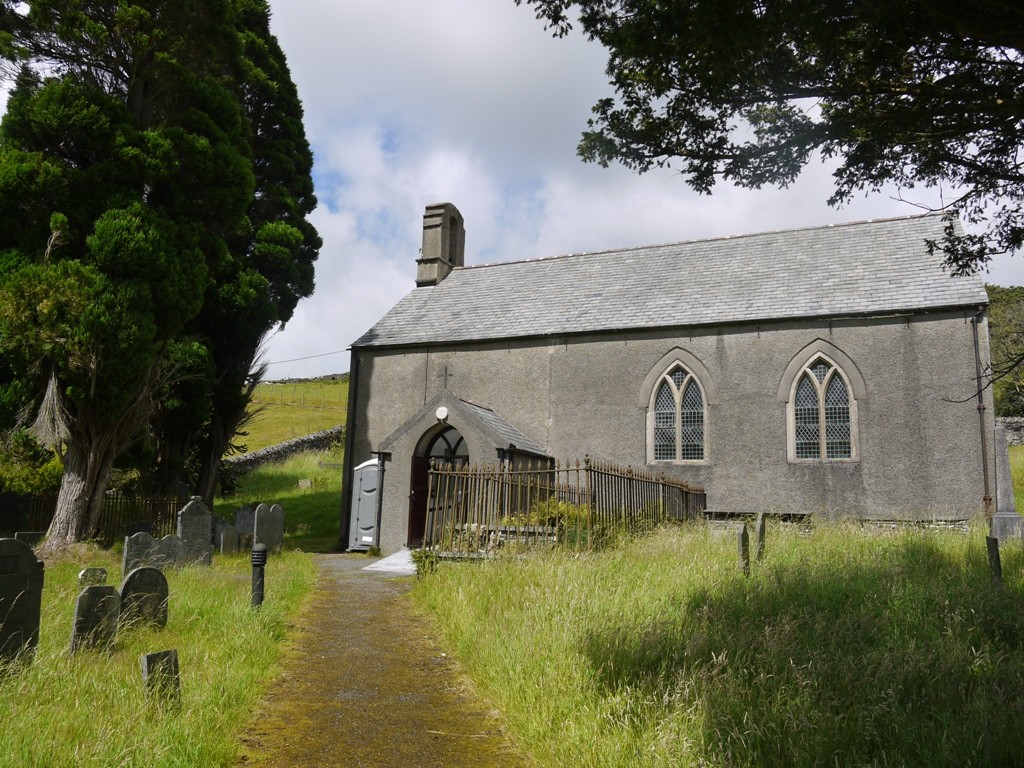
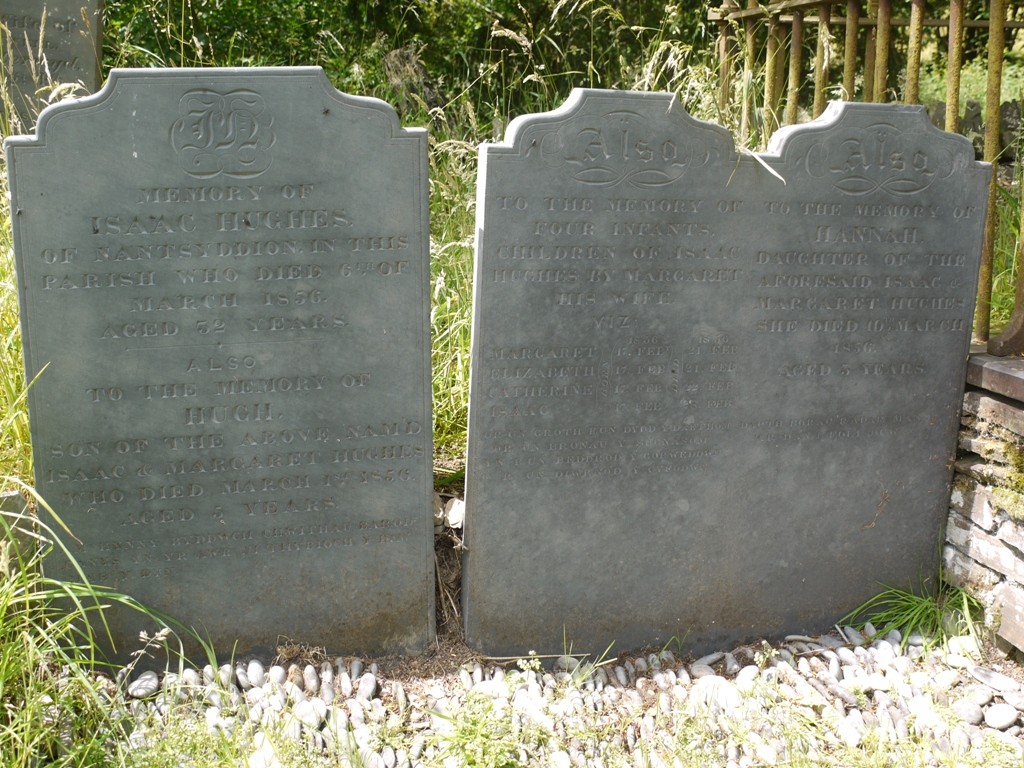
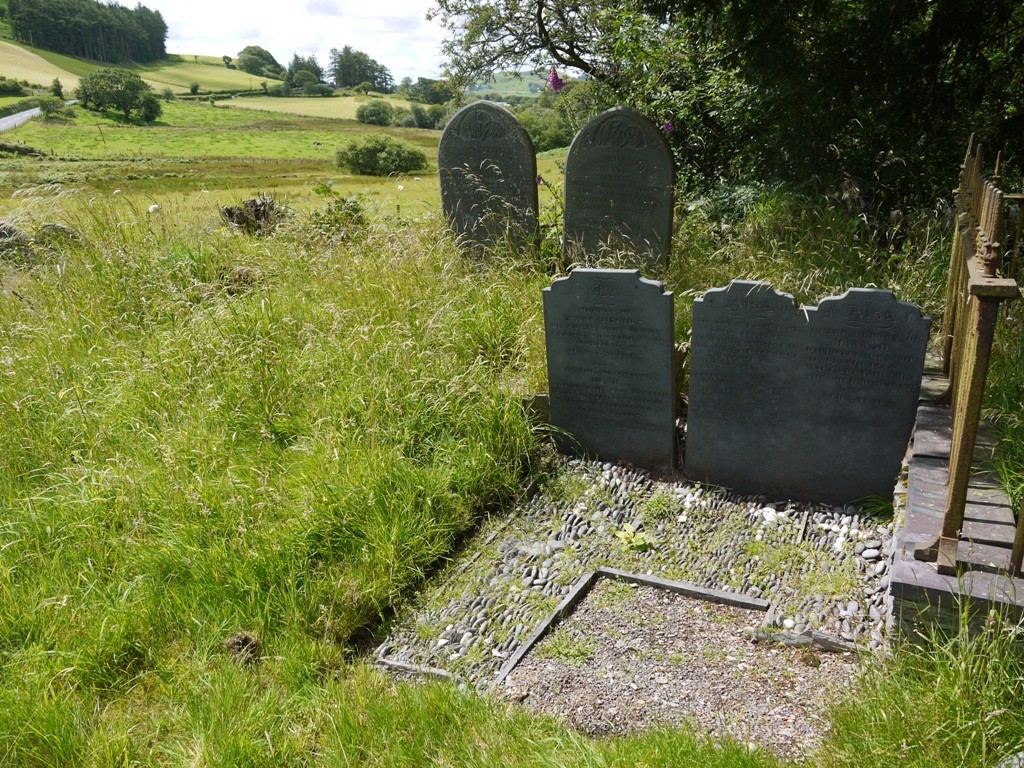
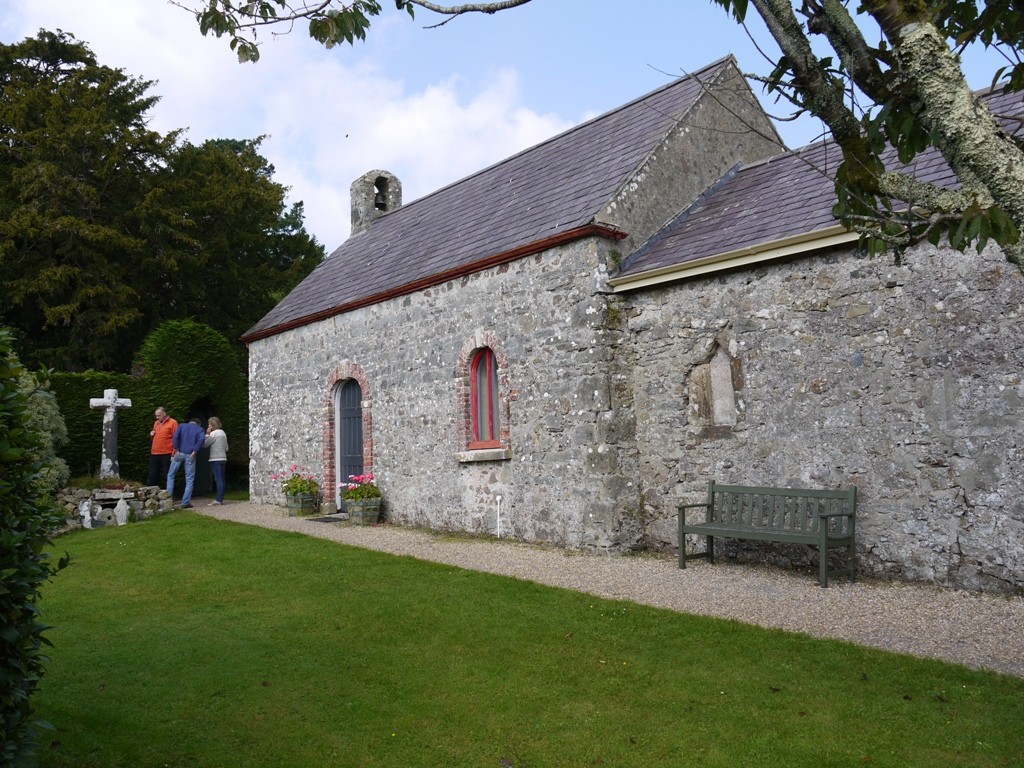
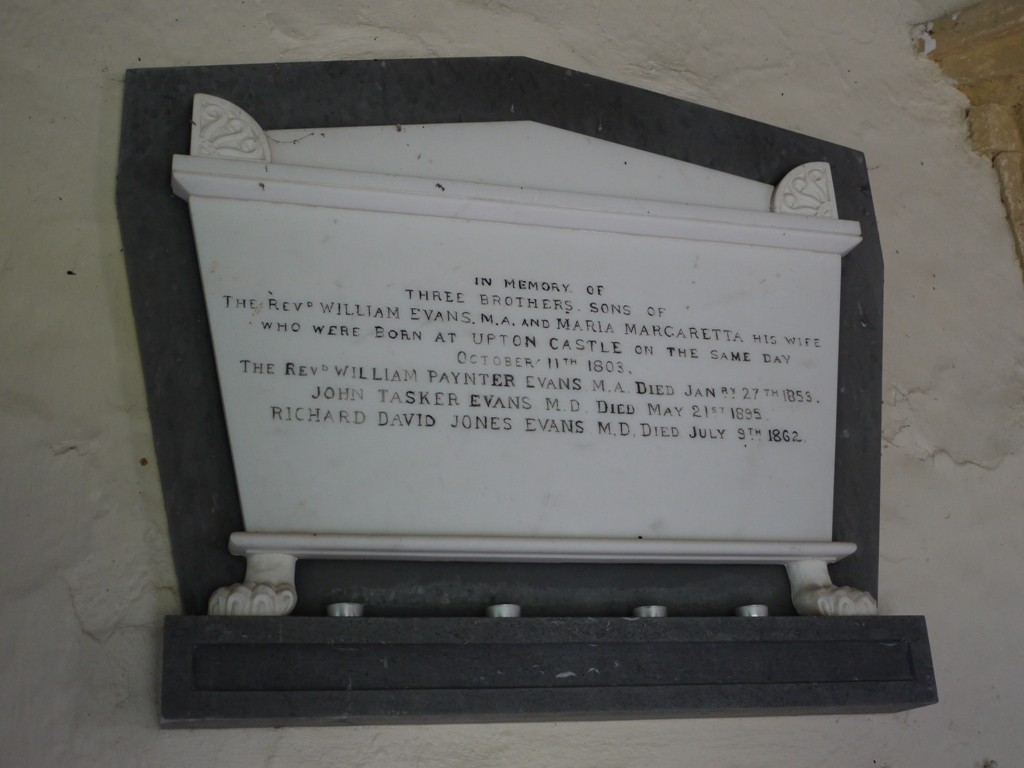
Well I never. The said Mrs . Loxdale of Castle Hill ,Llanilar was our land lord.
Or was your landlord Myfanwy Louisa Regina Loxdale, who was the daughter of Florence and who married a kinsman Major JJH Loxdale? That Mrs Loxdale lived at Castle Hill till she died in the late 1980s.
So interesting to read about the history of this church and the locality. A previous incumbent of this parish was the Rev. Richard (Dick) Evans who was the husband of my Mother’s best friend from their schooldays in Ardwyn, and I visited the vicarage next door on a number of occasions in the 1950’s. My earliest meeting with him was at my baptism in Llanbadarn Church – which of course I don’t remember – but I do remember getting stung when helping him with his bees when they lived outside Devil’s Bridge some years later. Another interesting feature of the district which is worth mentioning – and which you might like to research for a future article – is Parson’s bridge. This is situated about a quarter of a mile from the church and crosses a gorge in the Rheidol and is well worth a look (not down – if you don’t have a head for heights !). Legend has it that the original bridge was constructed to enable the miners in the silver and lead mines locally to more easily get to the church. The current bridge is a sturdy steel affair erected in recent times, but the old bridge which was of wooden construction was maintained and repaired by my Grandfather William Miller of Llanbadarn who was a carpenter. A picture of him on the bridge appeared in the Cambrian News some years ago, and although we have a copy of the grainy newsprint photo we have been unable to trace the article because their archives were lost in a fire.
How very interesting ,our family have visited Upton castle on many occasions as we live within walking distance. Beautiful grounds very well kept a pleasure to visit would recommend it
We really enjoyed visiting Upton Castle. I have no known ancestral link with Pembrokeshire, but had the names Tasker as a given name and Upton as my surname when I was born in New Zealand.
Quite a coincidence on the name! Have you thoroughly explored your family history?
As far as I know, both the Tasker and the Upton names came from Lincolnshire, a pace called Pinchbeck near Spalding. One of the Uptons married a Rebecca Tasker and the name became routinely used as a given name for boys and girls. They emigrated to NZ in the mid 19th century and settled in Auckland/Waikato. No Welsh as far as I know — I wish!
I don’t think there is any reason to believe John Tasker of Upton Castle had any Welsh roots. But your Rebecca Tasker could be a relative of his?
Could be, of course, but they were farm labourers who didn’t leave much in the way of tracks behind. Her signature on the marriage certificate I have seen is a cross so she seems to have been illiterate.
I have done extensive research on this Tasker family they do have a long line of Welsh history Captain John Tasker b.1727 Burton Pembroke to a Susan Tasker she was the wife of Warham Tasker esquire died in 1727 His line goes back to a william Tasker esq. buried at Castle pyll . Around this time they become part of the Tucker family from Devon eng from their to Normandy France under the name Tout Cour.
Why do you believe that John tasker had. No connections to wales or upton ???
Thank you, Connie, for your earlier contribution to this strand. My comment was in reply to Bridget Gilfillan Upton. It did not contain any positive information, merely that I then had no evidence to connect Tasker with Wales. As purchaser of the estate he could have come from anywhere. You have now provided evidence that he did come from Wales, for which thank you. My principal interest was in the remarkable triplet birth rather than the back story of ownership.
With reference to the Rev. William Paynter Evans; although he had a daughter who died in infancy he also had a son, Charles Tasker Evans, born in 1844 at Upton, who died in 1872 in Pembroke. Charles was an Ensign in the Ist battalion 10th Foot and married a Mary Paynter whilst stationed in Malta. (I haven’t yet established if both she and Charles’ father were linked with the Paynter family of Dale Castle.) The 1871 census shows the couple living on the High Street in Pembroke. Unfortunately Charles died in 1873 and there was no issue.
Thanks for this amendment, I am adding a line in the account drawing attention to your comment.
Mary Paynter who married Charles Tasker Evans was my great-grandmother. Their daughter, Muriel, was born on 27 August 1872 in Pembroke and died, of diphtheria, on 24 November 1880 in Nash upon Upton. I do not know for sure if either of them was linked to the Paynters of Dale Castle.
I imagine Elizabeth Anne Roberts, who added a comment in 2016 will be interested in this. Did your great grandmother go on to marry someone else after Charles Tasker Evans’ death?
Yes, firstly she married Charles Frere Cleugh who died in India in 1881.I know he was born in Malta, where Mary’s father, Joshua Paynter, was an army surgeon, but little else. As far as I know they had no children. In 1882 Mary married Richard Dean(e) Gilbertson who was born in Aberystwyth. His father was a doctor and I believe he is the ‘old Dr Gilbertson’ referred to in the extract from one of Florrie Hamer’s scrapbooks. Richard and Mary Gilbertson lived in Pembroke and had three children. The eldest, Arthur, was my maternal grandfather.
So many connections: I wonder does your family also include Col Richard Gibertson (deceased) of Lampeter Velfry, who was a founder member of the Welsh Historic Gardens Trust and a notable rose enthusiast?
Pingback: Knight errant? | Letter from Aberystwyth